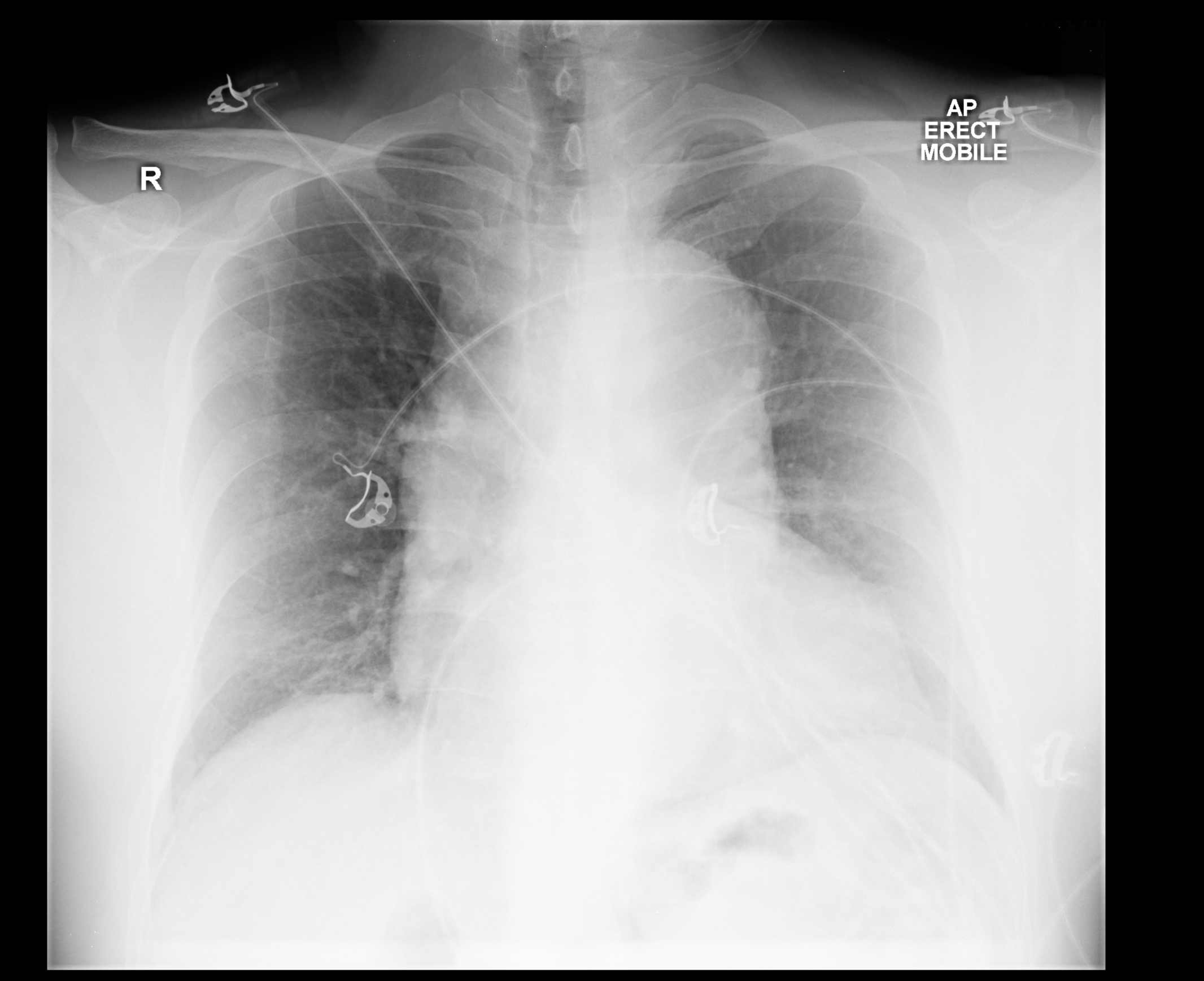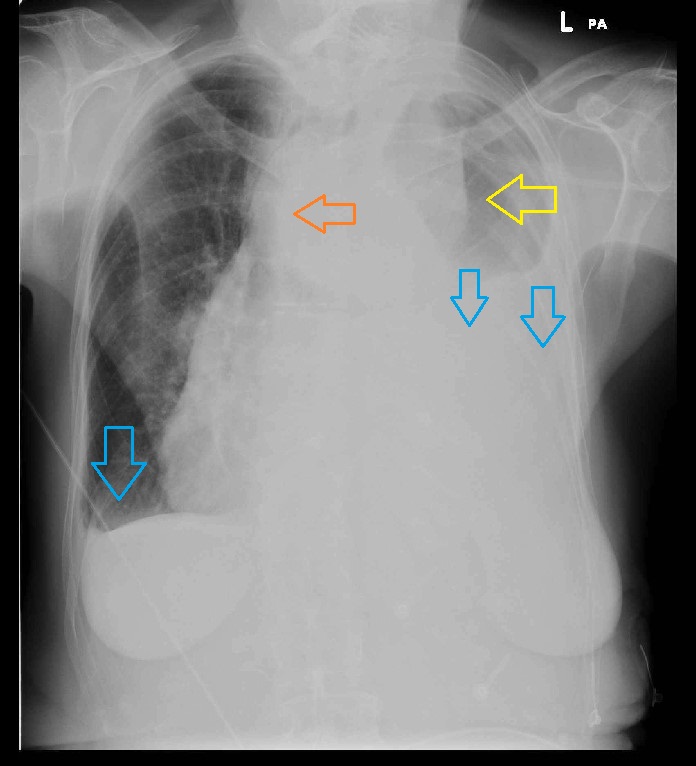Chest pain x ray
|
Chest pain Microchapters |
|
Diagnosis |
|---|
|
Treatment |
|
Case Studies |
|
Chest pain x ray On the Web |
Editor-In-Chief: C. Michael Gibson, M.S., M.D. [1]; Associate Editor(s)-in-Chief: Aisha Adigun, B.Sc., M.D.[2]
Overview
There are no x-ray findings associated with [disease name].
OR
An x-ray may be helpful in the diagnosis of [disease name]. Findings on an x-ray suggestive of/diagnostic of [disease name] include [finding 1], [finding 2], and [finding 3].
OR
There are no x-ray findings associated with [disease name]. However, an x-ray may be helpful in the diagnosis of complications of [disease name], which include [complication 1], [complication 2], and [complication 3].
X Ray
An x-ray may be helpful in the diagnosis of common causes of chest pain. Findings on an x-ray include:
- Aortic dissection[1][2][3]
- Widened mediastinum, (> 8cm at the level of the aortic knob on portable AP chest radiographs)
- Left pleural effusion
- double and irregular aortic contour
- Displaced intimal calcification >5mm (ring sign)
- Esophageal and tracheal deviation to the right
- Blurred aortic knob
- Depression of left mainstem bronchus
- Apical capping on the left
- Loss of paratracheal stripe


OR
There are no x-ray findings associated with [disease name]. However, an x-ray may be helpful in the diagnosis of complications of [disease name], which include:
- [Complication 1]
- [Complication 2]
- [Complication 3]
References
- ↑ de Lacey G, Morley S et-al. The Chest X-Ray: A Survival Guide. Saunders Ltd. ISBN:0702030465.
- ↑ Lai V, Tsang WK, Chan WC, Yeung TW (August 2012). "Diagnostic accuracy of mediastinal width measurement on posteroanterior and anteroposterior chest radiographs in the depiction of acute nontraumatic thoracic aortic dissection". Emerg Radiol. 19 (4): 309–15. doi:10.1007/s10140-012-1034-3. PMC 3396328. PMID 22415593.
- ↑ Gleeson CE, Spedding RL, Harding LA, et al The mediastinum—Is it wide? Emergency Medicine Journal 2001;18:183-185.
- ↑ Case courtesy of Dr Wayland Wang, Radiopaedia.org, rID: 50763
- ↑ Case courtesy of Dr Devanshi Pathania, Radiopaedia.org, rID: 68763